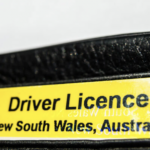Avoiding a Criminal Record by Doing Rehab

Section 10 dismissal and conditional release orders are often considered the ‘holy grail’ of sentencing outcomes.
As mentioned in several of our blogs, section 10 dismissals and conditional release orders of the Crimes (Sentencing Procedure) Act 1999 allows a person to avoid a criminal record even if they are guilty of an offence. In traffic cases such as drink driving, it also means that they avoid being disqualified from driving.
But many do not know that there are three different types of section 10 dismissals; including the infrequently used section 10(1)(c).
Section 10 dismissals Explained
The first type of section 10 dismissal is called a section 10(1)(a) dismissal. This gives courts the power to simply dismiss the charge without recording a conviction, and without requiring a good behaviour bond. It is generally regarded as the most favourable sentencing outcome for those who plead guilty.
More frequently, courts will make an order under section 10(1)(b). This means the defendant is discharged without recording a conviction on the condition that they enter into a good behaviour bond.
The bond is subject to standard conditions that the person must be of good behaviour (ie not commit any further offences) and return to court if called upon to do so (which will only normally occur if another offence is committed during the bond period). Additional conditions may be imposed, but the bond is limited to a maximum period of two years.
Section 10 bonds (now conditional release order without conviction) are different to ‘section 9 good behaviour bonds’ in so far as the latter come with a criminal conviction and can last up to five years.
Section 10(2) of the Act provides guidance on when a court can deal with a case under section 10(1)(b):
(2) An order referred to in subsection (1) (b) may be made if the court is satisfied:
(a) That it is inexpedient to inflict any punishment (other than nominal punishment) on the person, or
(b) That it is expedient to release the person on a good behaviour bond.
If a person is discharged under a section 10(1)(b) and breaches the bond (for example, by committing an offence) they may be brought back before the court and re-sentenced for the original offence, and the fact they were on a bond will be an aggravating feature of the new offence.
Finally, there is the relatively unheard of section 10(1)(c), which allows a court to discharge a person without conviction if they ‘enter into an agreement to participate in an intervention program and to comply with any intervention plan arising out of the program.’
What is an Intervention Program?
Section 347 of the Criminal Procedure Act 1986 says that an intervention program can comprise a program which does any of the following:
- Promotes the treatment or rehabilitation of the offender or accused persons;
- Promotes respect for the law and the maintenance of a just and safe community;
- Encourages and facilitates the provision by offenders of appropriate forms of remedial actions to victims and the community;
- Promotes the acceptance by offenders or accountability and responsibility for their behaviour;
- Promotes the reintegration of offenders into the community.
It is a broad definition which covers a whole range of rehabilitation programs.
What Types of Cases Can Be Dealt With Under Section 10(1)(c)?
Not all cases can be dealt with under section 10(1)(c).
The first step for a court is to determine whether it is appropriate to deal with the case under a non conviction order at all. In considering this, the court will have regard to the following matters:
- The person’s character, antecedents, age, health and mental condition;
- The trivial nature of the offence;
- The extenuative circumstances in which the offence was committed;
- Any other matter that the court thinks proper to consider.
It should, however, be noted that a case does not necessarily have to be ‘trivial’ in order to be dealt with under a non conviction order. In fact, many serious cases have been dealt with under the section, including drug supply cases and serious assaults that are before the District Court.
The second step is for the court to determine if the offence is one which can be dealt with by an intervention order. Section 348 of the Criminal Procedure Act says that all summary offences, as well as indictable offences which can be dealt with summarily (i.e. in the Local Court), can be dealt with under an intervention program – except for the following:
- Malicious wounding/infliction of grievous bodily harm;
- Maliciously cause dog to inflict grievous bodily harm;
- Sexual assault offences;
- Child prostitution or pornography offences;
- Stalking/intimidation with intent to cause fear of physical or mental harm;
- Firearms offences;
- Certain drug offences, such as drug supply and drug cultivation.
Section 10(1)(c) is perhaps most commonly used in assault, drug and driving cases, where a person agrees to complete an anger management course, a drug treatment program or a traffic offender program.
It is a useful section that is grossly under-utilised by criminal lawyers.
Going to court for a traffic offence?
If you are going to court for a traffic offence, call or email Sydney Criminal Lawyers anytime to arrange a free first consultation with an experienced, specialist traffic lawyer who will accurately advise you of your options, the best way forward, and fight for the optimal outcome in your specific situation.






